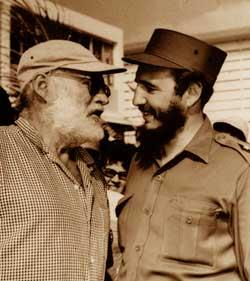
Needless to say, I was overjoyed to find out about the existence of a Hemingway museum in Oak Park, Illinois, a suburb of Chicago. Hemingway was born in Oak Park, an area filled with literary history and houses by Frank Lloyd Wright. The city itself was picturesque of a quaint town in autumn. Boutiques and shops lined the streets. The weather was somewhat dreary but still nice enough to walk to the museum.
The museum and birth home are completely run by volunteers and members of the Hemingway Foundation of Oak Park. I thought that because all the employees were volunteers, they must really care about the museum and want to give the best experience for the guests. I was wrong. The volunteers were snooty and awkward; the tour guide seemed to rehearse a script rather than inform about the birth home. The attendant overseeing the museum practically made me beg for her to open the gift shop. When she finally decided to walk down the four steps to the shop (and after I swore to purchase something), she forced my boyfriend to sit at the ticket table while I looked. While in the gift shop, a man I had seen wandering around the exhibit entered. The volunteer questioned whether he had paid the ticket price and continued to interrogate him (I think it would be impossible to enter the museum through the only doorway, past the only attendant, without being noticed). He finally presented his ticket and she left him to look at the slightly overpriced memorabilia. I did manage to find a Hemingway world map for a friend and a decently-priced poster for myself, therefore keeping my word to the disgruntled volunteer.
The house itself was a little hokey; everything was reproduced and sometimes inconsistently. The house was obtained by the foundation in the 90s, so most of the house has been recreated using photographs. In the sitting room of the house, a photograph depicted the room with bold stripes painted on the walls, when in reality, only a small panel of the wall was painted. When asked why only this section was painted, the tour guide said, “I don’t know. I guess someone just didn’t feel like finishing it.”
The museum contained no actual manuscripts and focused largely on The Old Man and the Sea. Some of the exhibits were poorly constructed, with fake leaves strewn about the display. Only one case exhibited The Sun Also Rises, even though this novel was the catalyst for the legend of Ernest Hemingway. The museum was a major disappointment for me.

No comments:
Post a Comment